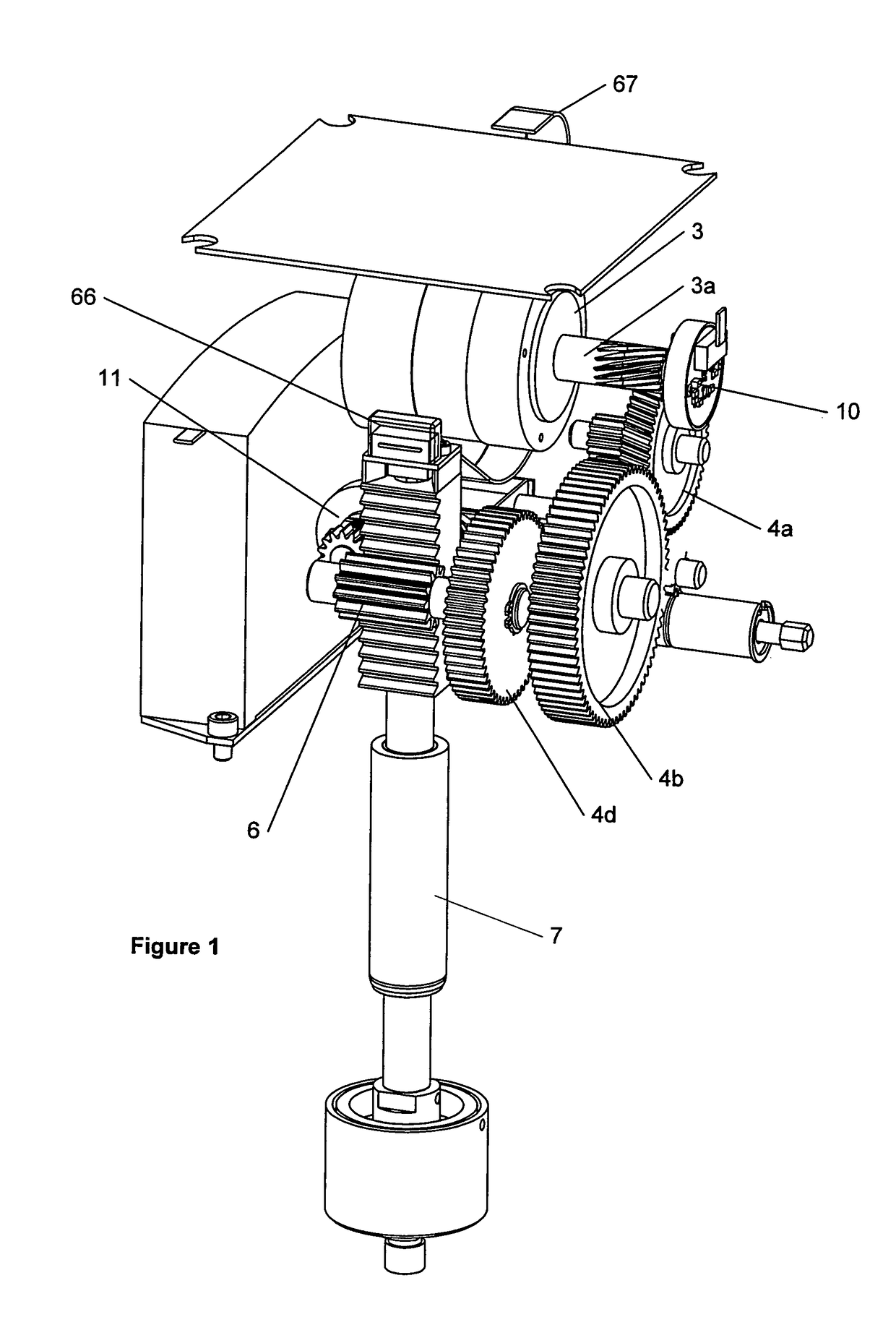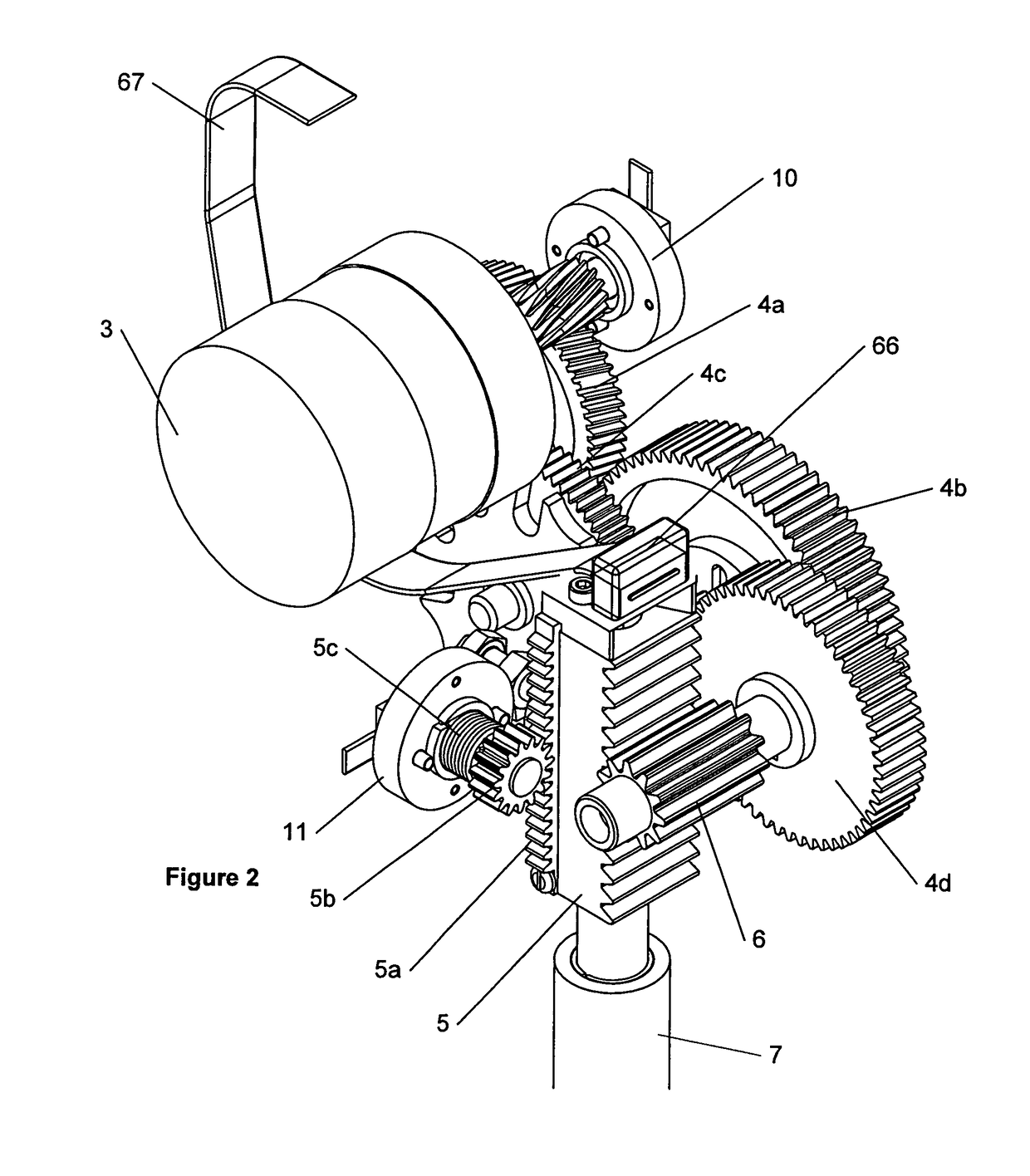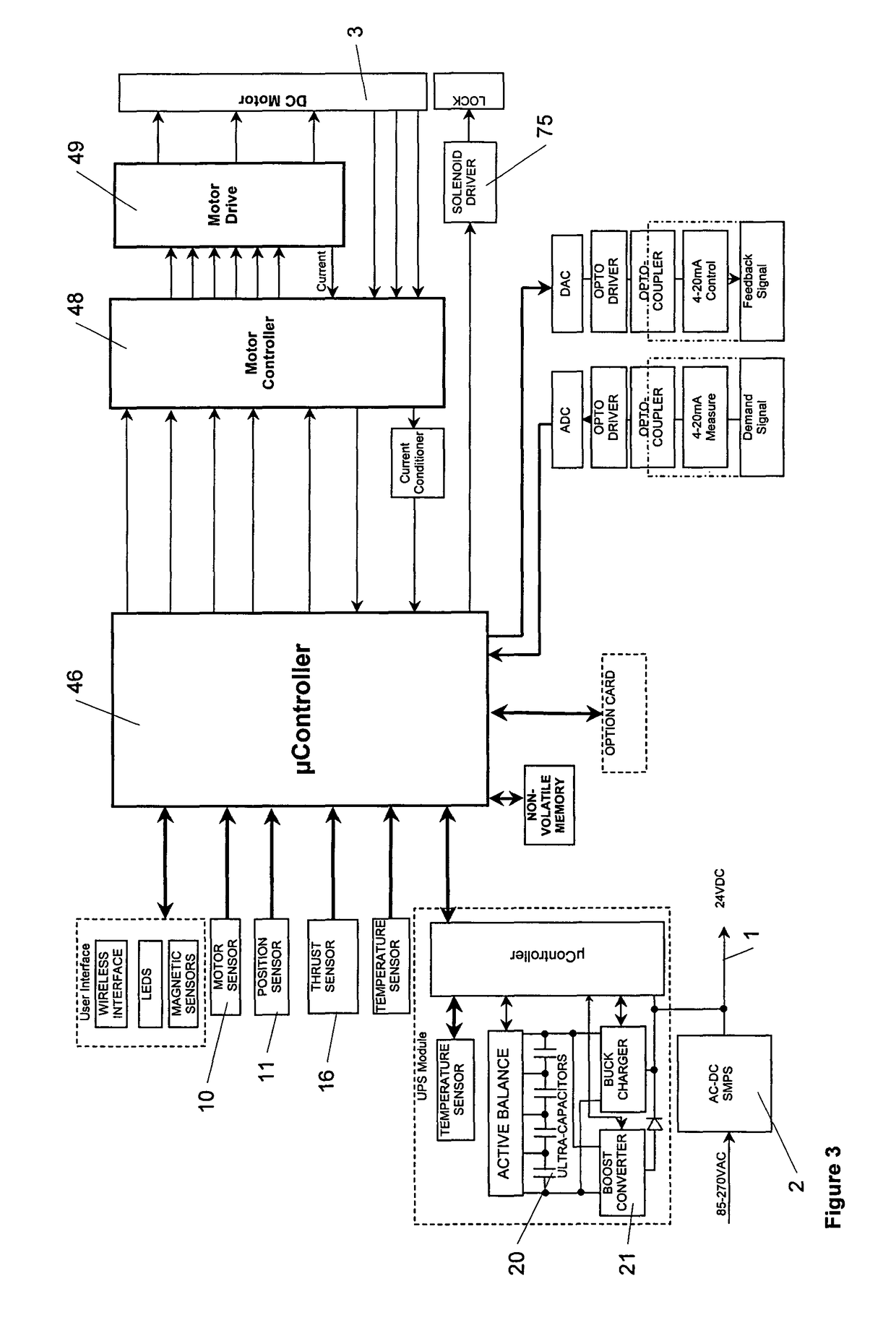Valve actuators
a valve actuator and actuator technology, applied in the field of valve actuators, can solve the problems of affecting the efficiency and effectiveness of the valve actuator in normal use, requiring relatively high power consumption, and affecting the stability of the control loop, and achieve the effect of low power consumption and cost effectiv
- Summary
- Abstract
- Description
- Claims
- Application Information
AI Technical Summary
Benefits of technology
Problems solved by technology
Method used
Image
Examples
Embodiment Construction
[0039]Referring to FIGS. 1 to 4, the system typically includes a DC power supply 1 provided by a switched mode power supply 2 that generates the voltages required for the electric drive motor 3 and electronics. The drive motor 3 of the actuator suitably comprises a permanent magnet DC motor that drives through a spur gear drive train 4a-d to a rack 5 and pinion 6. The rack 5 is coupled to an output shaft 7 of the actuator that provides the linear output required to vary the extent of opening of the control valve. The control valve is not shown in the figures.
[0040]The electric drive motor 3 is permanently connected to its power supply 1 with the voltage varied by a motor controller 48 and power drive 49 to move the motor 3 and vary its speed and / or torque.
[0041]A first non-contacting digital position sensor 11, that suitably is a rotary / shaft encoder is present adjacent the end of the pinion 6 that drives the actuator output shaft 7 to detect the position of the output shaft 7. The ...
PUM
 Login to View More
Login to View More Abstract
Description
Claims
Application Information
 Login to View More
Login to View More - R&D
- Intellectual Property
- Life Sciences
- Materials
- Tech Scout
- Unparalleled Data Quality
- Higher Quality Content
- 60% Fewer Hallucinations
Browse by: Latest US Patents, China's latest patents, Technical Efficacy Thesaurus, Application Domain, Technology Topic, Popular Technical Reports.
© 2025 PatSnap. All rights reserved.Legal|Privacy policy|Modern Slavery Act Transparency Statement|Sitemap|About US| Contact US: help@patsnap.com



